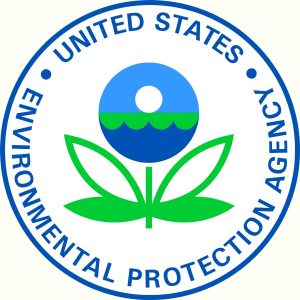EPA truck emission rule strongest ever according to agency
New rule establishes revised emission standards for NOx
80% stronger than current standards according to EPA
New rules cover a wider range of heavy-duty engine operating conditions
Will yield emissions warranties that are 2.8x to 4.5x longer
EPA projects that by 2045 rule will reduce NOx emissions from the in-use fleet of heavy-duty trucks by almost 50%.

EPA on Dec. 20 finalized what it called “the strongest-ever national clean air standards to cut smog and soot-forming emissions from heavy-duty trucks beginning with model year 2027.”
The U.S. Environmental Protection Agency on Dec. 20 finalized what it called “the strongest-ever national clean air standards to cut smog and soot-forming emissions from heavy-duty trucks beginning with model year 2027.”
The new rule establishes revised emission standards for oxides of nitrogen (NOX) from medium- and heavy-duty on-highway engines. EPA said the new regulations are more than 80% stronger than current standards.
This final rule will reduce emissions from heavy-duty engines that contribute to ambient levels of ozone, particulate matter, NOX, and carbon dioxide.
“Control of Air Pollution from New Motor Vehicles: Heavy-Duty Engine and Vehicle Standards’’ (see official document below) is the first update to clean air standards for heavy-duty trucks in more than 20 years, according to the EPA. Those emissions regulations were phased in over the first decade of the 2000s. They were so challenging that they essentially drove Caterpillar out of the truck engine business and resulted in a major loss of market share for Navistar.

The new rule establishes revised emission standards for oxides of nitrogen (NOX) from medium- and heavy-duty on-highway engines.
Enjoying our insights?
Subscribe to our newsletter to keep up with the latest industry trends and developments.
Stay InformedThe new standards just published require heavy-duty commercial vehicles to limit nitrous oxide (NOx) emissions to 0.035 grams per horsepower-hour during normal operation, 0.050 grams at low load, and 10.0 grams at idle.
The new rules cover a wider range of heavy-duty engine operating conditions than the current standards.
They also require these more stringent emissions standards to be met for a longer period of time of when these engines operate on the road. The new rules increase useful life of governed vehicles by 1.5 to 2.5 times and will yield emissions warranties that are 2.8 to 4.5 times longer. These longer useful life and warranty periods guarantee that as target vehicles age, they will continue to meet EPA’s more stringent emissions standards for a longer period of time, according to the agency.
The rule also requires manufacturers to better ensure that vehicle engines and emission control systems work properly on the road. For example, manufacturers must demonstrate that engines are designed to prevent vehicle drivers from tampering with emission controls by limiting tamper-prone access to electronic pollution controls.

EPA said the rule also includes “a balanced approach to engine derates related to the selective catalytic reduction (SCR) emission control system.”
EPA said the rule also includes “a balanced approach to engine derates related to the SCR emission control system.” The final SCR inducement program requires engines to provide more advance notice for operators that their SCR system is not working properly, which EPA believes will encourage ongoing maintenance while limiting frustration due to unexpected engine derates.
The requirements for electronic controls and SCR inducements are expected to reduce the risk of operators completely disabling emission control systems and further ensure that the new emissions standards continue to be met during in-use operations.
EPA projects that by 2045, this final rule will reduce NOx emissions from the in-use fleet of heavy-duty trucks by almost 50%.
EPA new-motor-veh-air-poll-control-hd-eng-veh-stnd-frm-2022-12-20




















